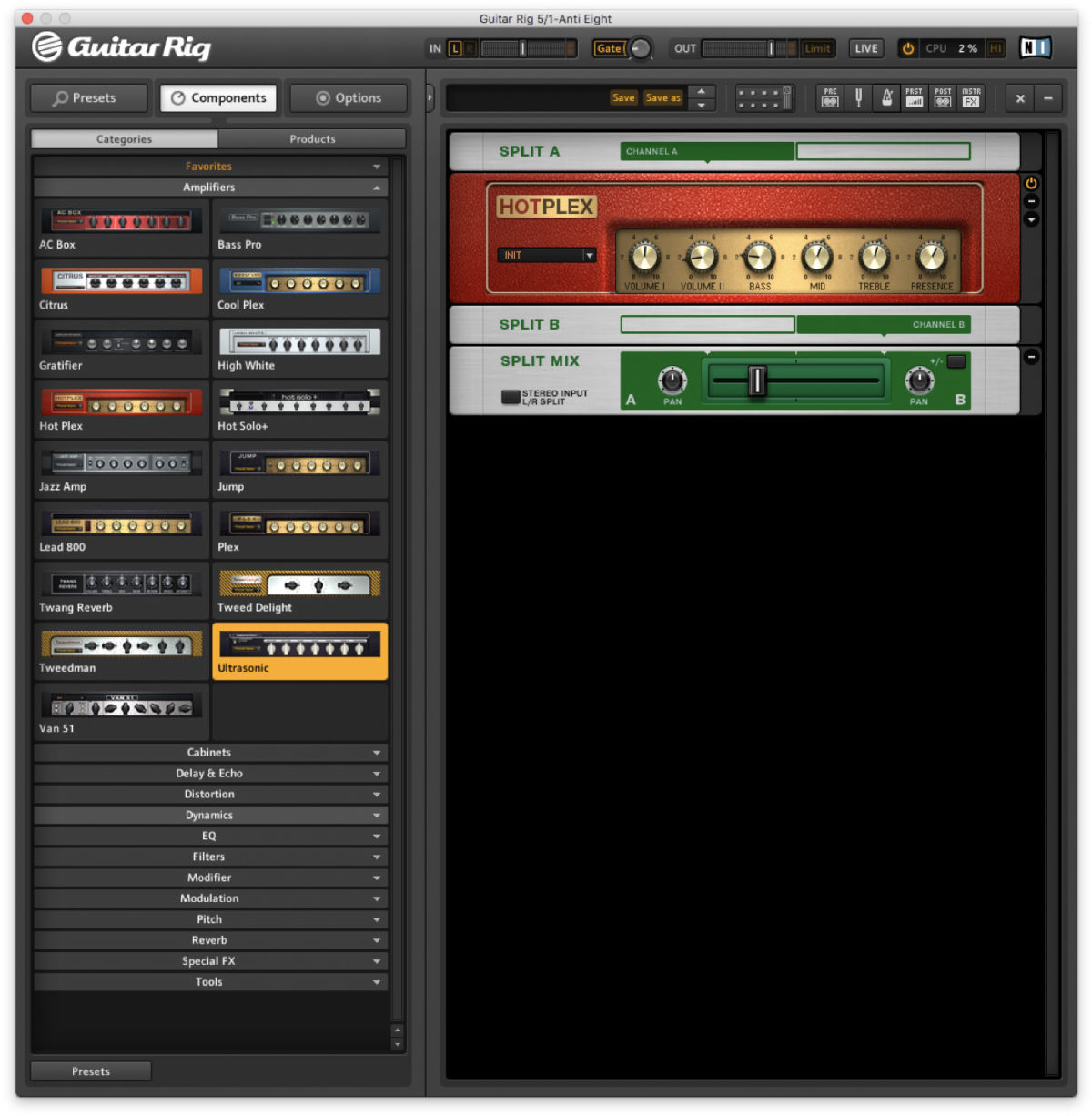
Each head was routed into a PRS J-Mod 2 x 12″ cabinet sitting on an Auralex GRAMMA v2 Isolation Riser. For the dirty sound, we used a Friedman BE-100, and the clean sound utilized Sweetwater Studios’ highly customized Fender ’65 Deluxe Reverb. Don wrote two parts that explored a range of sounds for each tone, and we dialed in the sound by plugging the guitar straight into the amp. Don Carr joined me in the studio with two guitars: a Gibson Les Paul Custom he used for the dirty sound and an LsL Carl Verheyen Special for the clean sound. The Fender ’65 Deluxe Reverb and Friedman BE-100 amp heads in Sweetwater Studio B control room feeding the PRS J-Mod 2×12″ cabinet.įor these recordings, we decided to use two guitar sounds - a dirty sound and a clean sound. The gear used for the guitar cabinet mic shootout Audio-Technica AT4047/SV (with -10dB pad engaged).Neumann U 87 Ai (cardioid pattern, -10dB pad engaged).AKG C414 XLII (cardioid pattern, -12dB pad engaged).Shure SM7B (no bass rolloff, no mid-range emphasis).Audio-Technica AE2300 (no lowpass filter).Sennheiser e906 (with presence boost engaged).Here are the details about what mics and other gear we used… Many engineers have listened and learned a lot including Sweetwater’s Mitch Gallagher, Nathan Heironimus and Bobby Dellarocco. Hearing these clips is an opportunity to expand your sonic horizons and maybe figure out how they made those incredible guitar tones on some of your favorite recordings. My hope is that you hear some mics you haven’t ever heard before, and if you’re like me, find some mics you like better than what you’ve been using. As I’ve listened and shared these files, it’s been interesting to hear how widely varied the opinions are when it comes to what people like. You may like one mic best on the dirty sound and a completely different mic on the clean sound. You may notice, as Don and I did, that mic preference often depends on the source material. The goal was not to pick a “best” guitar mic, but rather to explore options. These sound clips will enable you to listen to 21 different mics, ranging in price from $99 to $3999, and hear how drastic a difference the microphone makes.

Don and I used premium components throughout the signal chain to make sure that the mics were presented in the best possible light. I went to great lengths to make sure that the test was fair and all the levels were matched (easier said than done). I decided to use two performances (one dirty and one clean) and used a re-amped signal for consistency so the performances are exactly the same every time. I took all of them into Sweetwater’s Studio B and Sweetwater’s Don Carr provided the playing.īecause mic placement is paramount to how a mic sounds on a guitar cab, each mic was placed in exactly the same position on the speaker cabinet (details below). There are some perennial standards, such as the Shure SM57, Sennheiser MD 421 II, and Royer R-121, as well as some mics you may not know. And yes, these are all mics that Sweetwater currently sells. I started off by making a list of mics and circulating it among my engineering comrades here at Sweetwater Studios to see which mics I should include. The process behind the guitar cabinet mic shootout For this article, I wanted to record a wide assortment of mics in order to show you how great an impact the microphone can make using identical source material and calibrated mic placement so the only variable is the microphone. Most people don’t have the luxury of auditioning dozens of guitar mics. The signal chain follows all the way through to the mic - the ultimate arbiter of what is heard by listeners, whether in a club, in a coliseum, or on the radio. Some of the best studio and live players understand that the signal chain determing their sound doesn’t end when the sound comes out of their speaker cabinet. I’ve learned first-hand what a drastic difference a mic can make in translating a guitarist’s tone, and it’s far more significant than many people realize. I spent nearly 40 years as a recording engineer, and I’ve used dozens of different mics on guitar cabinets. That frequently underestimated component is the mic in front of your guitar cabinet. But unless you’re playing guitar in a room where you don’t have to mic your amp, there’s one more component of your sound that is the conduit that allows everyone else to hear your guitar.

They audition everything from guitars to amps, tubes, speakers, pickups, strings, pedals, even replacing capacitors and potentiometers in their guitars. We all know that guitarists are obsessive about their tone, and rightfully so.


 0 kommentar(er)
0 kommentar(er)
